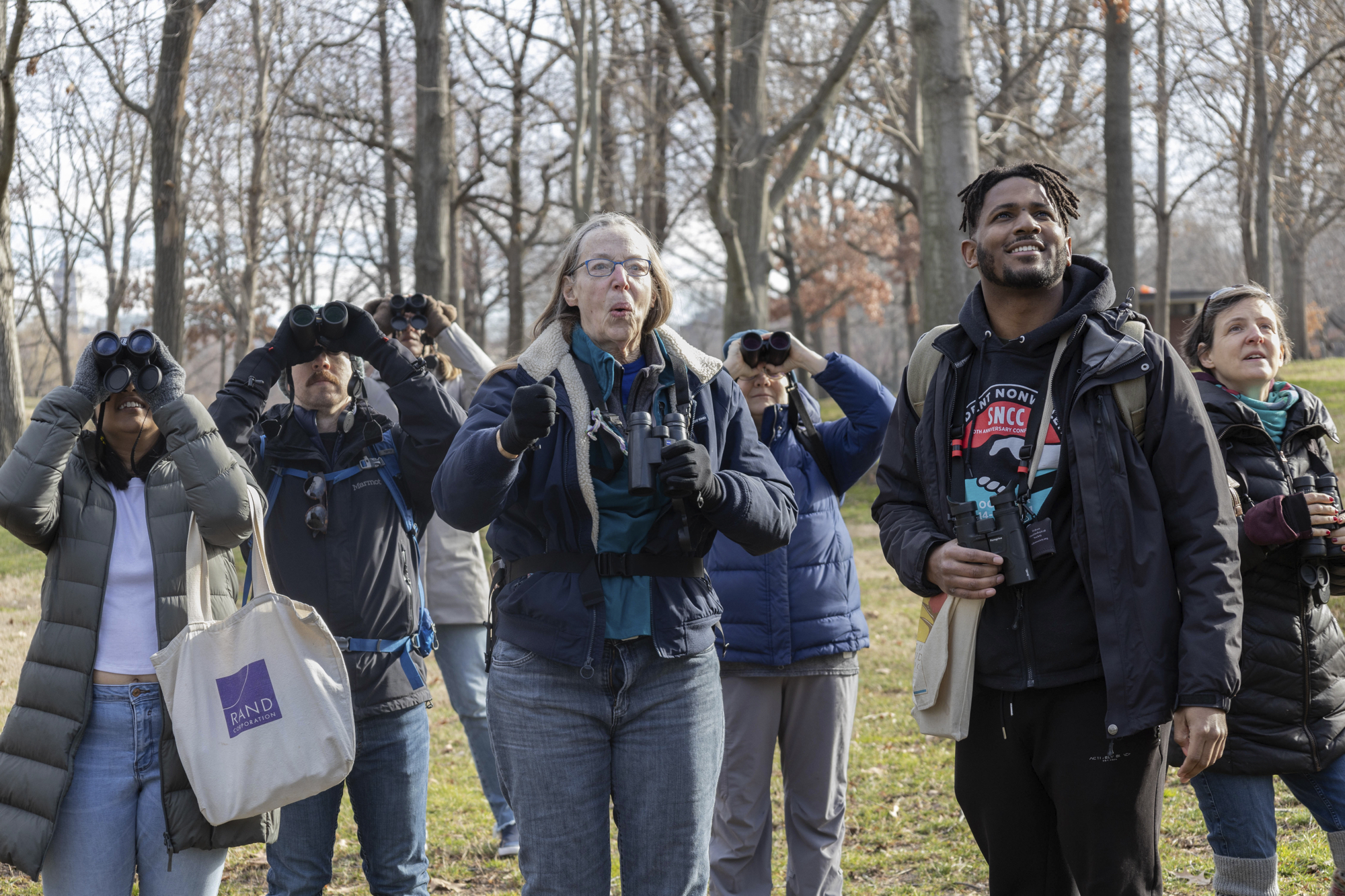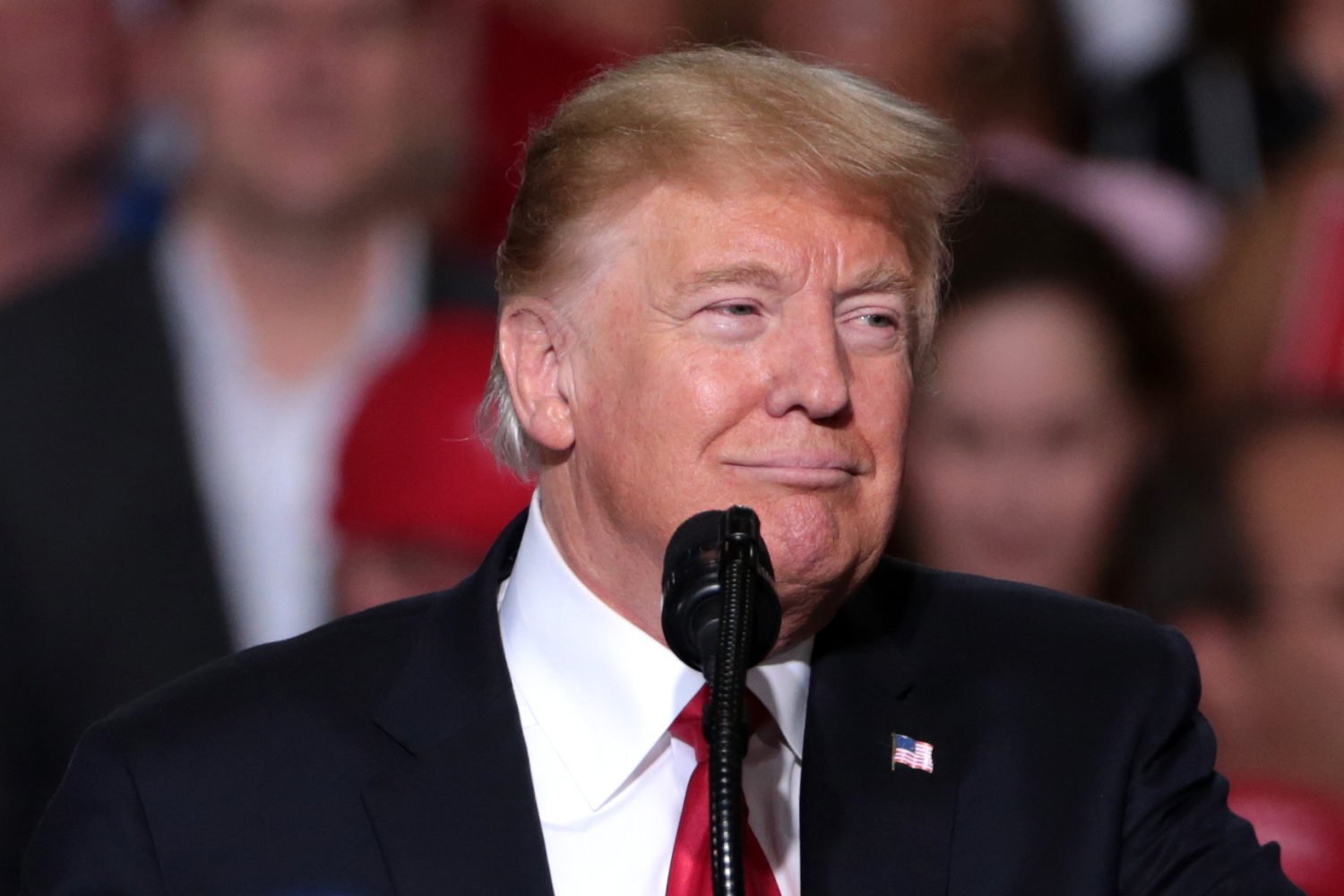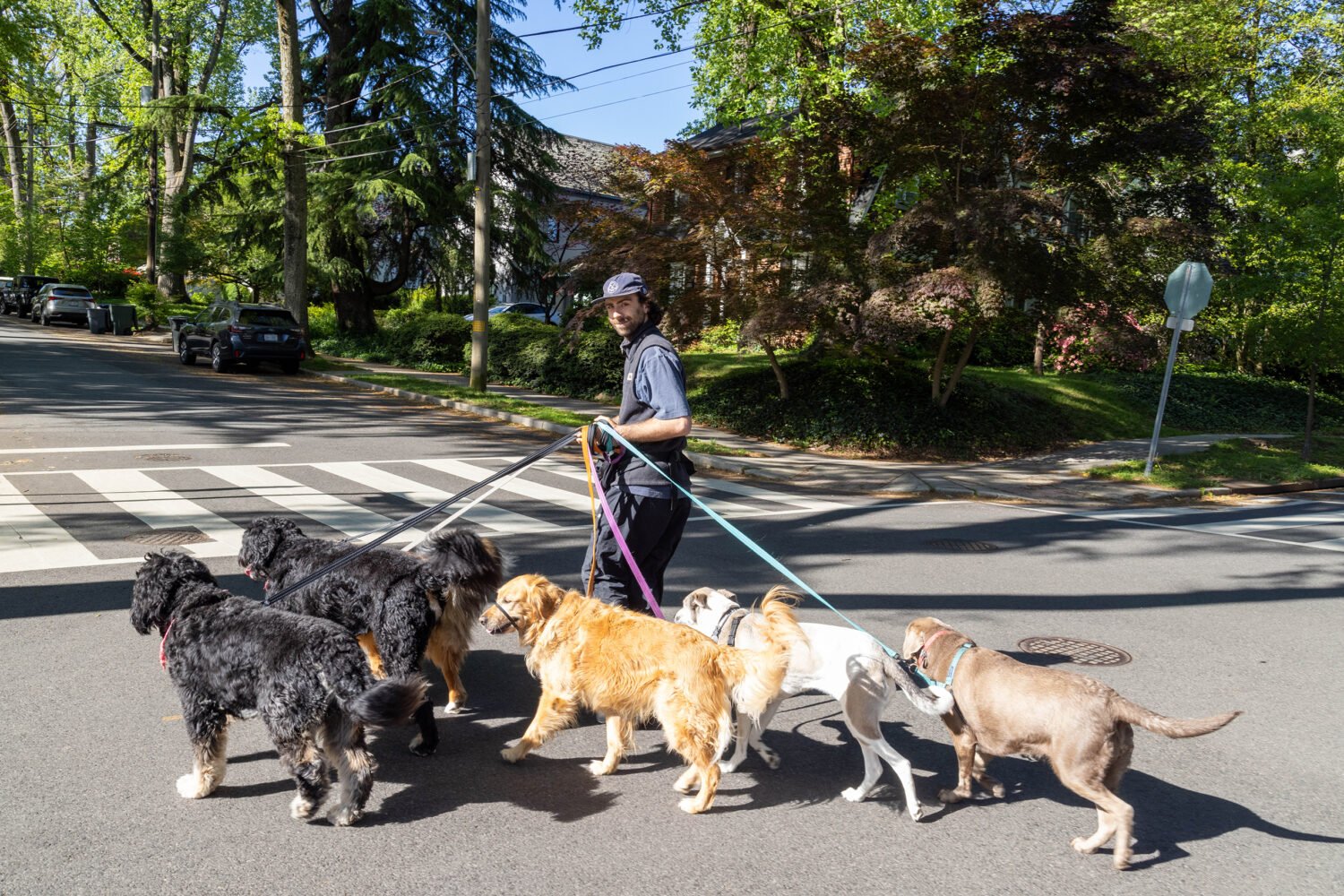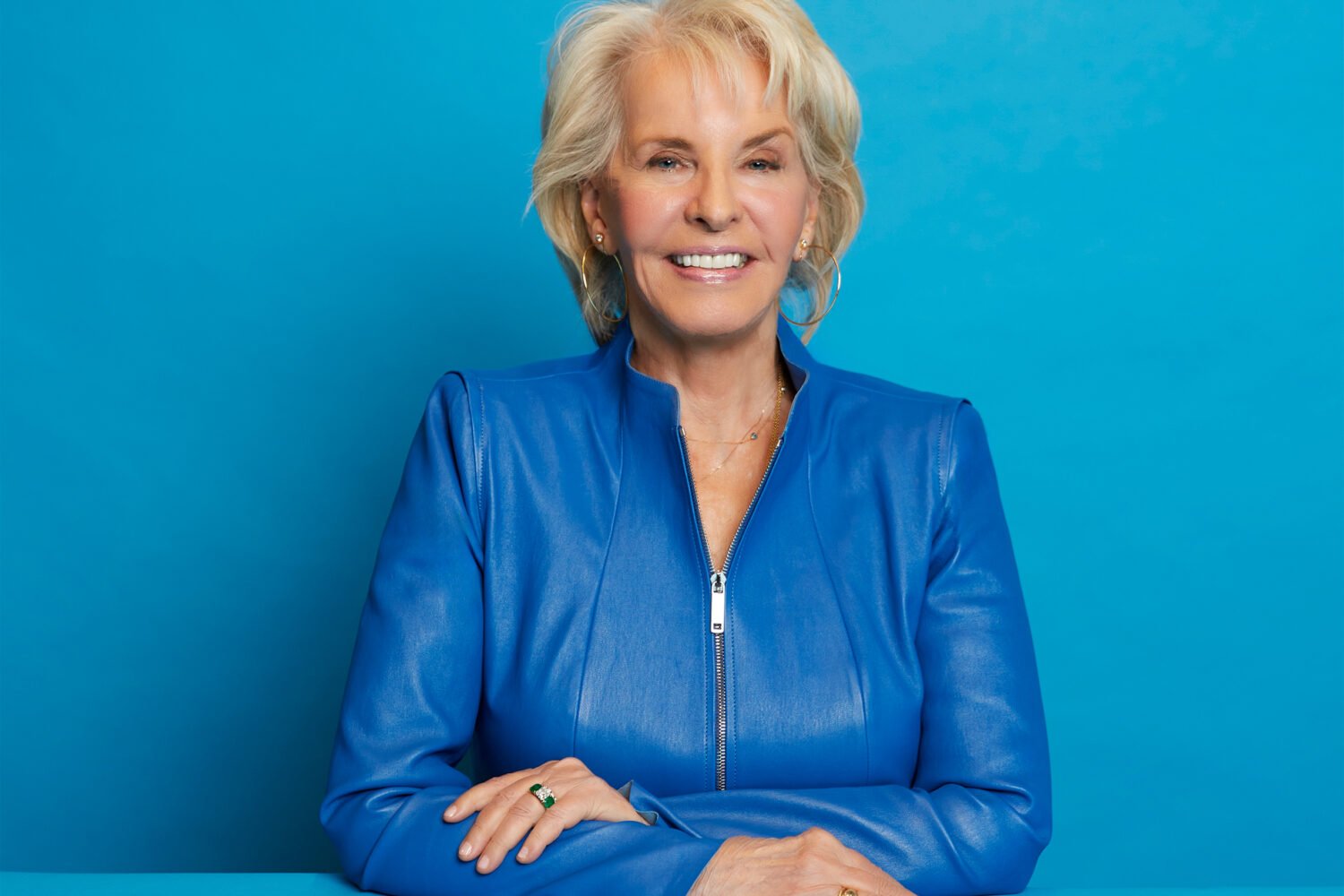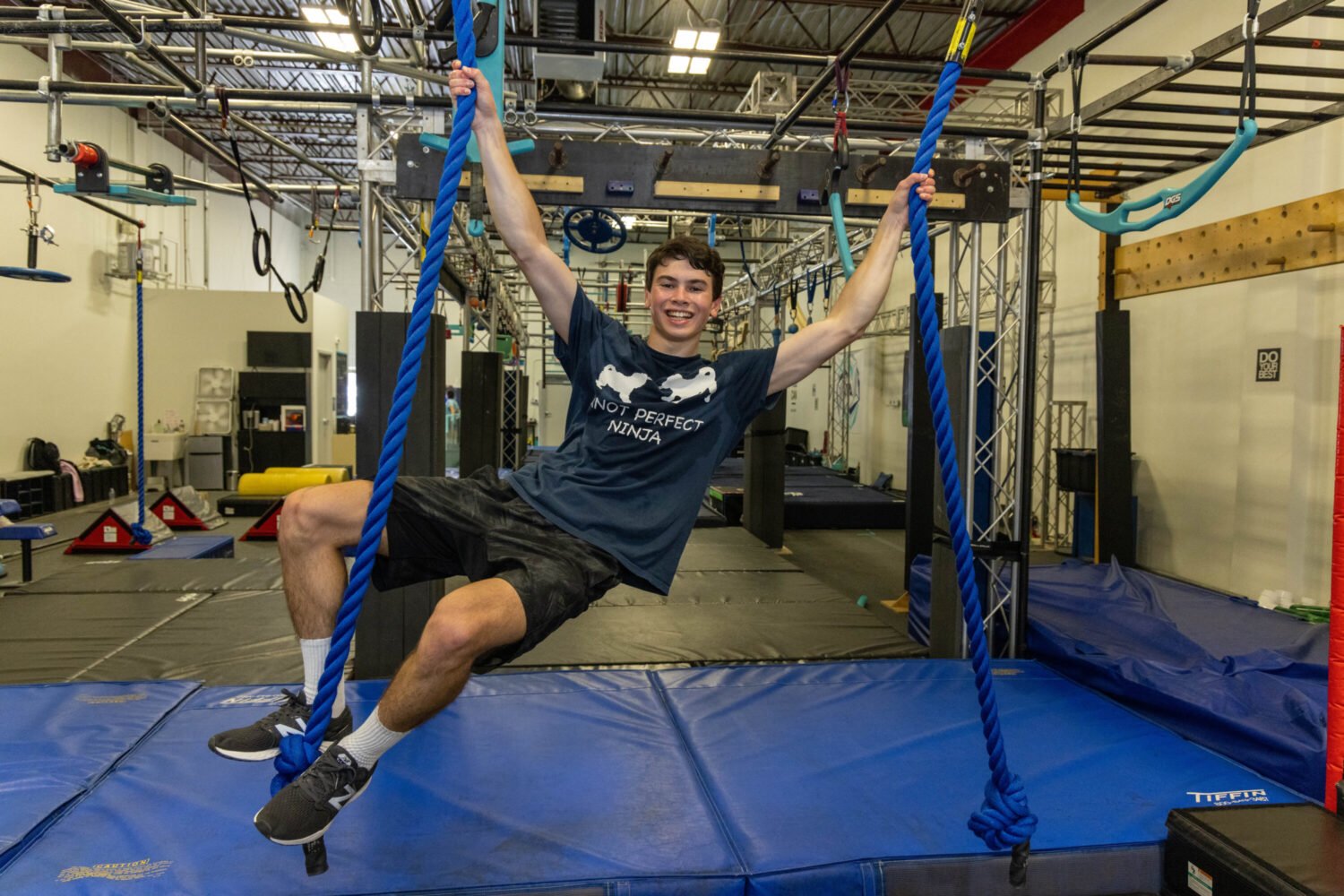It’s a crisp morning at the Botanic Garden near the Capitol, and I’m training my binoculars on a Carolina wren: a bulbous brown bird with a white streak above its eye. The wren skirts a tree trunk, pecking lazily at its bark. Behind her, the National Museum of the American Indian glows in the sunrise, like someone cracked a yolk on its facade. As I watch this bird, my breath slows and my phone seems distant. It’s hard to believe this is a lobbying event.
Beside me, five Hill staffers—fueled by free doughnuts and lukewarm coffee—are gripping binoculars and straining to see the wren. In half an hour, they’ll head to their congressional offices for work, but for now they’re trailing behind Tykee James, the 29-year-old environmental lobbyist who leads these monthly bird walks. James considers the events to be a soft-power offensive—connecting the government’s movers and shakers to nature, hoping they’ll remember this sweet-faced wren when the time comes for their bosses to vote.
From 9 to 5, James works as a lobbyist for the Wilderness Society, a national nonprofit that protects wild lands. But off the clock, his time is devoted to birds. One of the District’s best-known birders, James is president of the DC chapter of the Audubon Society, the host of two bird-adjacent podcasts, a board member of various bird nonprofits, and cofounder of the annual event series Black Birders Week. If you see a bird walk advertised in the District, chances are he’s leading it.
“There’s no policy ask” during the nature walks, Tykee James says. “I let the birds do all the talking.”
Wearing gray sweats and burgundy Allbirds sneakers, James moves our group around the Bartholdi Fountain, his binoculars strapped to a chest harness. He’s a whimsical character who uses words like “wonderfizzle” while regaling us with facts about birds. Spotting a flock of chimney swifts, he points skyward and tells the group that these birds resemble “cigars with wings.” We watch them for a moment, then James shouts, “Let’s get kinetic!”—his way of prodding us to move along.
This wholesome event isn’t most people’s idea of lobbying—there’s no Scotch and no smoky back room. As we meander through the gardens, James doesn’t once mention the various bills he’s trying to advance—the Environmental Justice for All Act, the Reconciliation in Place Names Act, the Outdoors for All Act—and barely utters anything about work. “There’s no policy ask,” he tells me later. “I let the birds do all the talking.” But he concedes that “there’s definitely a follow-up call,” where he and staffers talk shop.
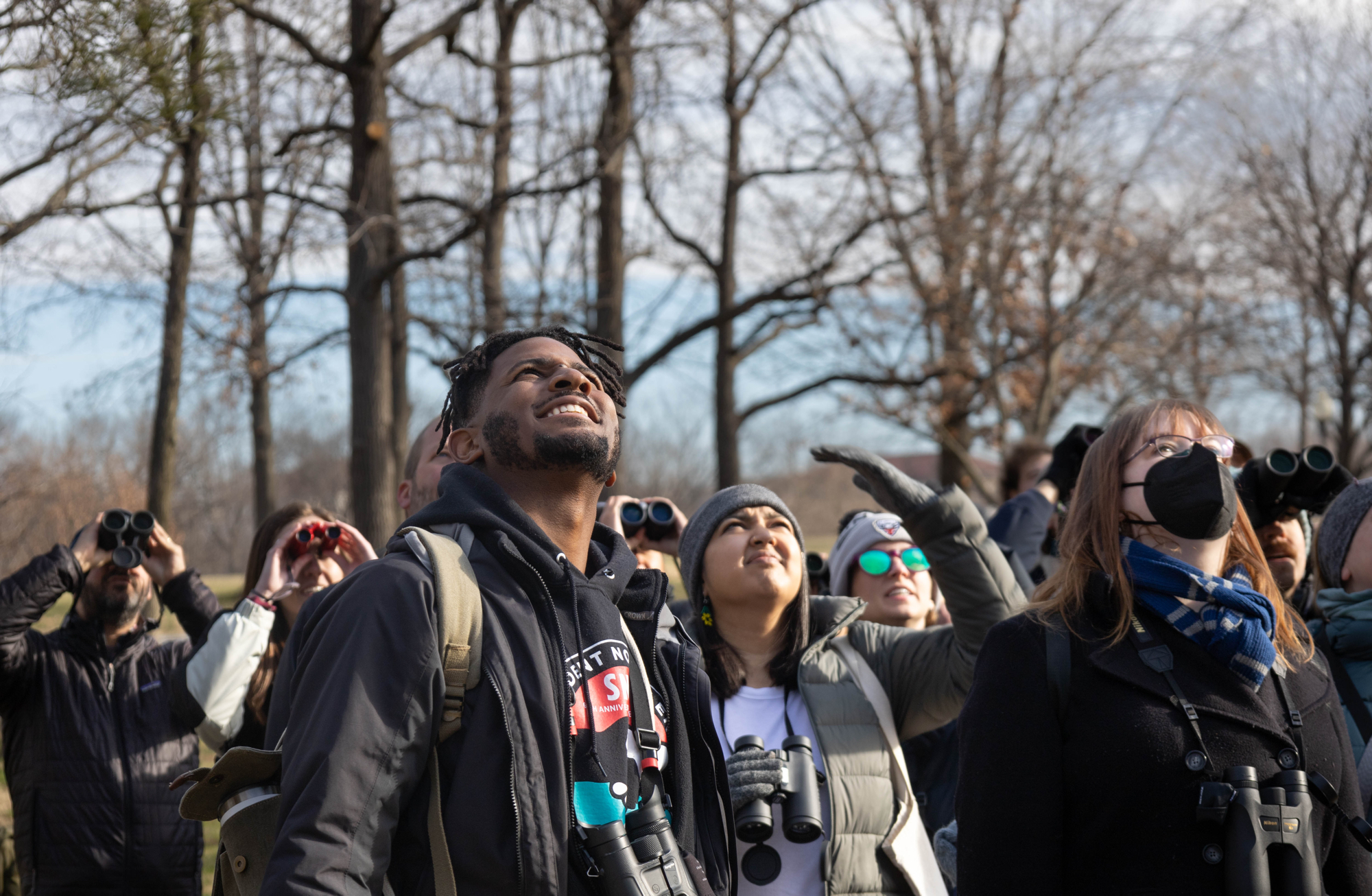
“It’s a unique approach,” says Shane Trimmer, legislative director for Congressman Jared Huffman. Trimmer has been on a dozen or so bird walks since James began leading them in 2019. “My email is currently blasting me like a fire hose from a whole lot of people trying to flag my attention,” he says—and much of it won’t make an impression. “But if I see an email from Tykee, I’m going to be like, ‘Oh, I love Tykee, I’ve gotta see what he’s got to say.’ ”
It’s valuable to have Hill staffers eager to take your calls, but the policy impact is tougher to trace. In Trimmer’s case, his boss is already an environmentalist. But Trimmer still thinks the walks make a difference. “With these soft-power approaches, a lot of it is subconscious,” he says. “Maybe because I’m birding in the morning, I’m more likely to spend time trying to craft a solution when I otherwise wouldn’t have.”
That’s why James awoke before dawn this morning, grabbing Dunkin’ and biking from his English basement in Brightwood Park to the Botanic Garden; he’s giving these staffers a meaningful experience of nature, hoping it will echo throughout their day. “You know, you can see 11 percent more birds if you bend down!” James calls out, and the group kneels dutifully. Crouched on a stone bridge above a clear stream, James seems to have these staffers just where he wants them: down on their knees before nature, about to head to work.
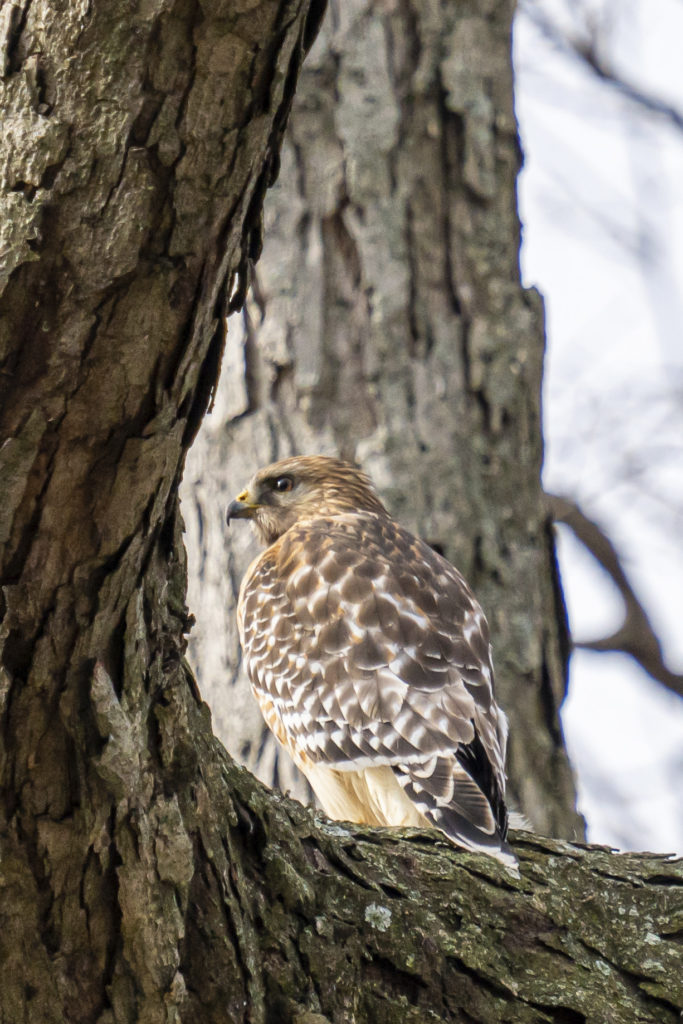
At the Wilderness Society, James describes his policy focus as “equitable access to nature.” This means fighting for initiatives such as wheelchair accessibility in parks, green space in urban neighborhoods, and transit-to-trails funding. In addition to these infrastructure issues, he’s interested in razing the cultural and psychological hurdles to people enjoying the outdoors. “There’s this barrier of not only intimidation but of just not knowing what’s out there,” he says.
James knows that feeling firsthand. When he was a high-school senior in Philadelphia, he wasn’t interested in nature—it didn’t seem relevant to his life. But he took a job as an environmental educator to earn extra money for a bike and a phone. In that role, James would knock on doors to chat with neighbors about installing rain barrels and home gardens. That experience changed him.
For one thing, it was how he found birds. “This environmental-educator role was taught by two really cool nerds,” he says, “and in our first lesson, everyone was assigned a bird to look up and talk about.” James got the belted kingfisher, a stubby swamp bird with a thick bill and belt-like markings. The next week, he was walking to work when he saw one jumping off a cattail and crossing a nearby creek. “That was the first time that looking at something on paper came to life in front of my eyes,” he says. “And I was like, Yo, I want a lot of other people to feel this, too.”
The job’s political dimension also resonated with James. He was organizing in an under-resourced area whose residents are predominantly Black, and he loved connecting people to nature who didn’t always feel it was for them. Today, James remains passionate about involving people of color in the outdoors, most notably through his work with Black Birders Week. This annual event began in 2020, after a viral video showed a white woman calling the cops on a Black man watching birds in Central Park. James was discussing the incident in a group text, remarking that the Black experience shouldn’t be understood just in terms of trauma—and that nature is a vital part of Black identity, too. The group decided to launch the weeklong series, which has since caught fire, inspiring programming across the globe.
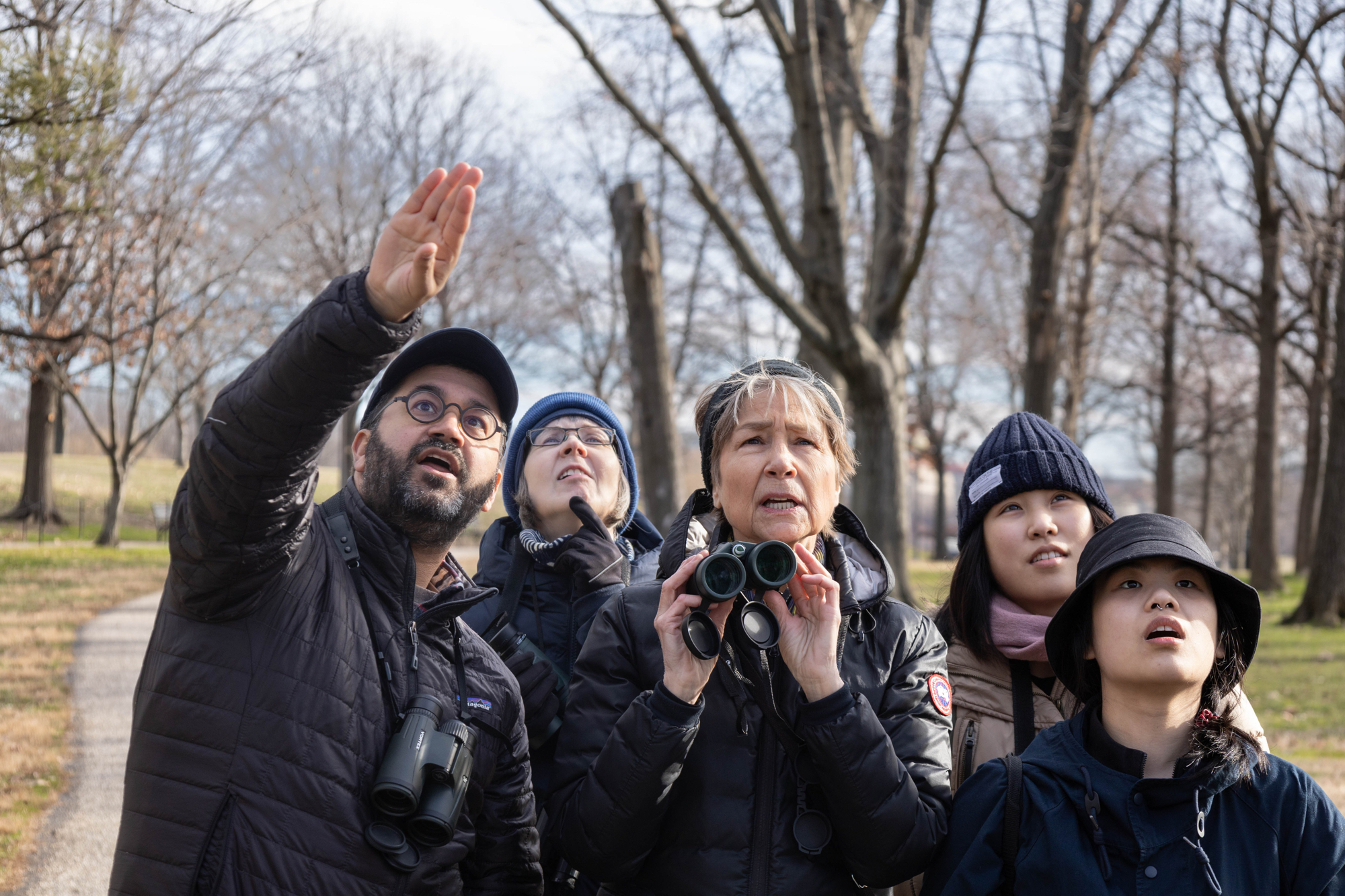
As an example, James mentions Harriet Tubman–themed bird walks on Maryland’s Eastern Shore, which was once part of the Underground Railroad. A bird guide and a historian have teamed up to show participants “what it meant to traverse this land without trails, in secret at night,” James says. Apparently, Tubman—who would sometimes imitate bird calls to communicate covertly with freedom seekers—felt deeply connected to animals. James does, too. “I think about European starlings,” he says. “Both of our ancestors were put on ships and taken across the Atlantic against our wills—and now we are here today, just trying to adapt, trying to thrive.”
History is one way to engage the public with birds, but James prefers being a ham. Throughout our walk, he calls yellow-rumped warblers “yumps” and “butterbutts” and repeatedly refers to walking as “taking the shoelace express.” His satchel of dad jokes is bottomless. At one point, he spies a house sparrow, then quips to a Senate staffer, “Maybe we’ll see a Senate sparrow later.”
James’s current flock of government workers is an earnest and eager bunch. They readily share bird facts—a group of sparrows is called a “host,” I learn—and they seem keen to try birding on their own. James recommends they go to Kenilworth Aquatic Gardens, though he’s incensed that it’s not accessible to “people with different walking abilities.” Then a bird flies overhead. “Pay attention to its shape and behavior,” James suggests as we struggle with identification. “Color is subjective because of the sun.” Shane Trimmer is the one who solves it—his dozens of bird walks have paid off.
As 9 o’clock nears, the staffers peel off toward Independence Avenue, headed to their office buildings down the street. James is going to work, too—he’s about to address the DC Council in support of a bill mandating bird-safe materials in new office and residential towers. (Since then, that bill has become law, potentially saving thousands of birds from fatal collisions.)
Later, James will call some of the staffers on today’s walk to drum up momentum for various bills—but their passage isn’t how he defines success. “The very important work that needs to be done,” he says, “is building a critical mass of people that are willing to act on behalf of the birds, and the forest, and the parks, and each other.” So if he has inspired some enthusiasm for birds today, the walk was worth it.
“One of the things I’ve found is that everybody has a story about birds,” James says. “It can be the robin that greets them in their garden, or the cardinal that they see on their commute to work, or their strange grandma who goes out birding in the dead of winter.” Because of this, he finds birds an ideal gateway to environmentalism. “So part of what I do is make space for people to talk about birds. It’s my passion—using birds to inspire folks to join me in my advocacy.”
This article appears in the March 2023 issue of Washingtonian.

